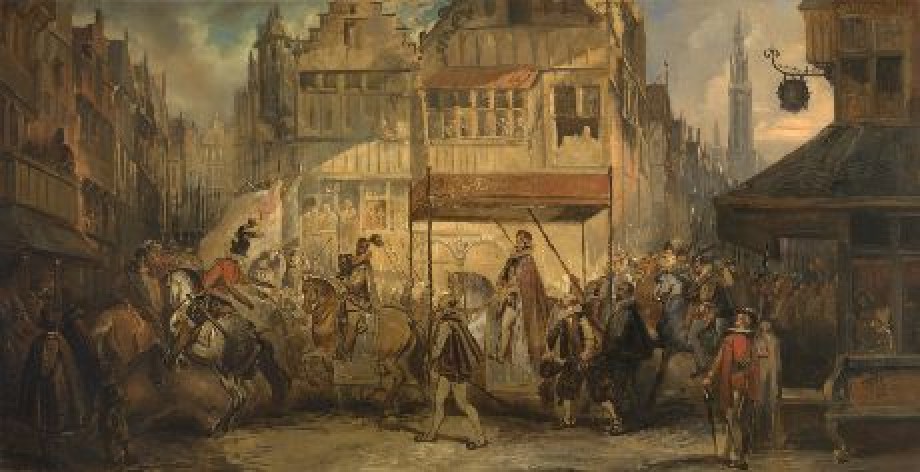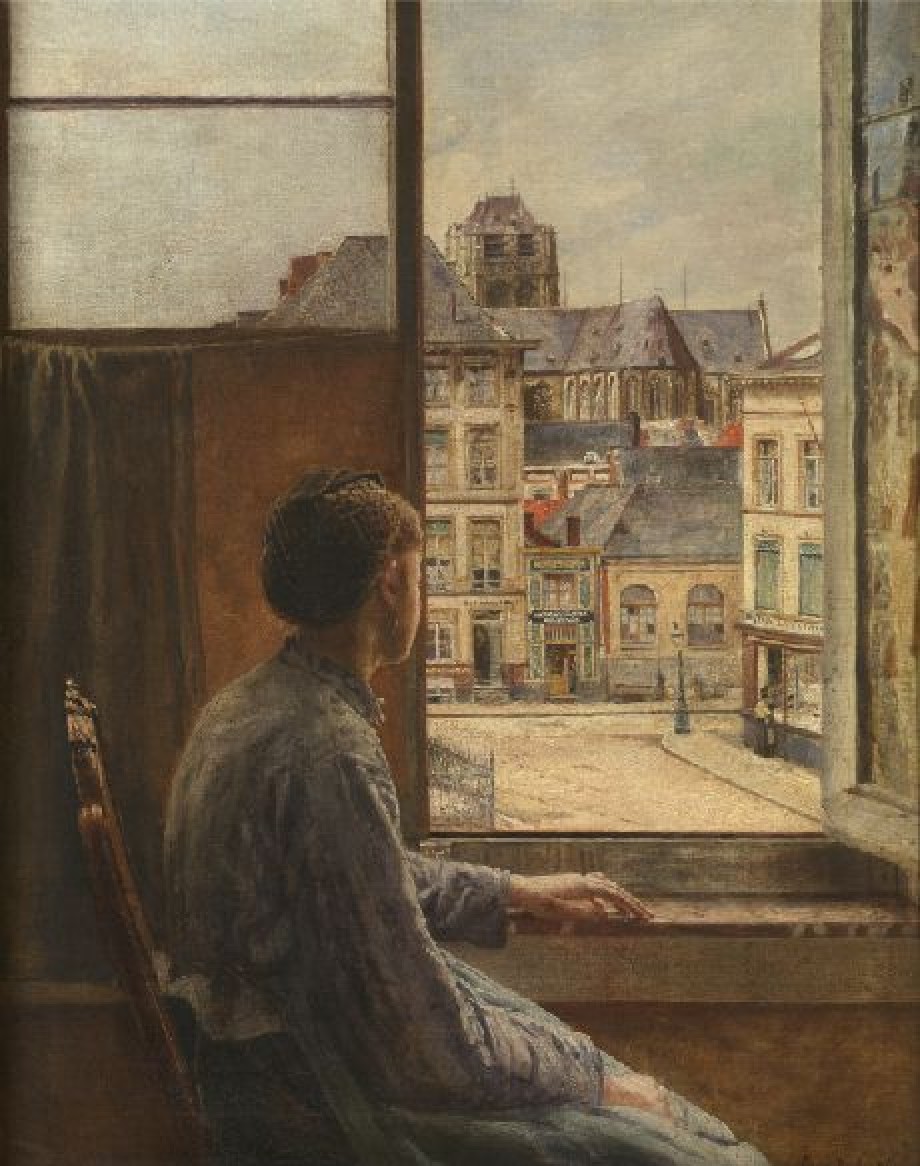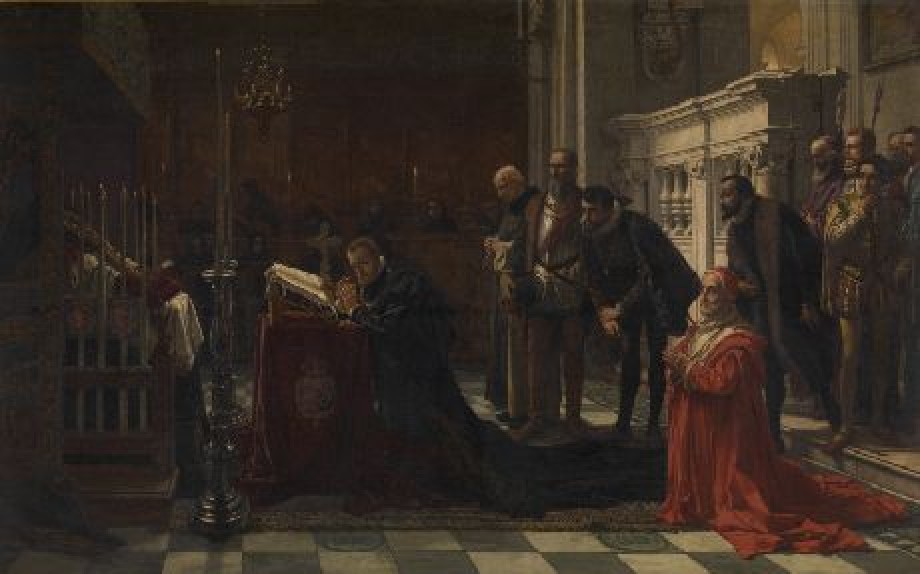The Spanish Fury in Antwerp

Artist / maker
Ferdinand de Braekeleer (painter)Date
1837Period
19th centuryCollection
Royal Museum of Fine Arts Antwerp
In the years following Belgian Independence the Salons were dominated by large paintings with heroic scenes from the nation’s past that were designed to encourage patriotism among the public. Ferdinand De Braekeleer pulled out all the stops at the Salon of 1836 in Brussels. In this colossal canvas of almost five metres high by seven metres wide, he depicted the…
Read more
In the years following Belgian Independence the Salons were dominated by large paintings with heroic scenes from the nation’s past that were designed to encourage patriotism among the public. Ferdinand De Braekeleer pulled out all the stops at the Salon of 1836 in Brussels. In this colossal canvas of almost five metres high by seven metres wide, he depicted the Spanish Fury, when mutinous Spanish soldiers invaded Antwerp on 4 November1576. The siege of the city, which lasted for four days, was accompanied by plundering, rape and violence of every kind. It was an episode from the Eighty Years’ War (1568-1648), that began with the Dutch Revolt against Spanish rule, and is definitely one of the most important periods in the history of the Low Countries. There were plenty of episodes for history painters to depict. De Braekeleer, an Antwerp citizen, opted for the one that touched him the most: the Spanish Fury, a pitch-black page from his city’s history.
At one o’clock in the afternoon the Spanish troops from the citadel marched on Antwerp. They did not meet any real resistance until they reached the main marketplace in front of the Town Hall. De Braekeleer captured the horror and tumult of the battle with a grand, dramatic flourish. The Spanish soldiers on the left are armed with muskets, lances and halberds. They mercilessly attacked everyone they came across. On the right are the citizens of Antwerp, with Gozewijn van Varick, the Margrave of Antwerp, playing a prominent role. The Town Hall is on fire, and the mortally wounded burgomaster, Jan van der Meeren, will die in the arms of alderman Jan van de Werve. Undaunted, Varick calls on his followers to attack. The citizens and dignitaries continue to defend their city bravely and unflinchingly. In the right foreground a mother with a child clasps her dead husband on her lap. The emotional scene is brightly illuminated against the dark background, where flames and thick clouds of smoke are swallowing up the city, as it were.
With his Spanish Fury in Antwerp De Braekeleer was trying to rival similar showpieces by his younger fellow citizens Gustaf Wappers and Nicaise De Keyser. However, his grandiose canvas only received a lukewarm reception. The influential art critic Louis Alvin accused him of a lack of grandeur and originality. He felt that the scene was not very surprising, that the composition was clumsy, the historical figures not sufficiently individualised, and the poses and expressions monotonous and stereotype. According to him, De Braekeleer lacked the history painter’s grand gesture, and recommended that he abandon his dream of becoming the ‘peintre de haute histoire’ and concentrate instead on his greatest talent, the intimate narrative genre scene. De Braekeleer exhibited The schoolmistress at the same Salon, a charming picture that Alvin praised as a perfect masterpiece. De Braekeleer did received official recognition, though. The Salon jury crowned his two entries with a silver medal and an official commission for the Musée moderne in Brussels to the value of 12,000 francs. The offended artist refused the medal but did accept the prize money, and even delivered two paintings: The Count of Mid-Lent with the children at school (KMSKB, Brussels, inv. no. 1186) and The golden wedding jubilee (KMSKB, Brussels, inv. no. 1187).
So far no drawings or preparatory studies have been found for this huge work. The inspiration for the swirling depiction of smoke and fire probably came from the oil studies that De Braekeleer had made as an eyewitness to the Dutch bombardment of Antwerp in 1832 (KMSKB, Brussels, inv. nos. 2962/1-13).
Read less











